Last week, I had the privilege to teach at the A Girl And A Gun national conference for the 5th year in a row. It was in beautiful Grand Junction Colorado at the Cameo Shooting Complex and it was another incredible experience.
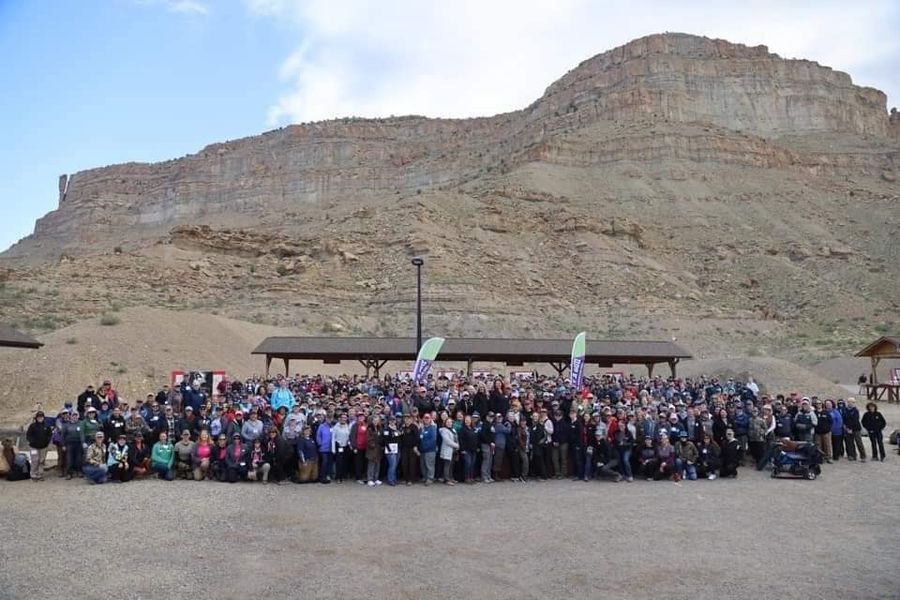 550+ women shooters from all 50 states took blocks of instruction on everything from situational awareness, instructing, empty hands combatives, pistol, rifle, shotgun, force-on-force, engaging targets out to 2000 yards, working/shooting around cars, shooting from helicopters, and more. Some trained for 3 days, others for 5 or more.
550+ women shooters from all 50 states took blocks of instruction on everything from situational awareness, instructing, empty hands combatives, pistol, rifle, shotgun, force-on-force, engaging targets out to 2000 yards, working/shooting around cars, shooting from helicopters, and more. Some trained for 3 days, others for 5 or more.
Instructors came from all walks of life…civilian, law enforcement, military, professional shooters, and more.
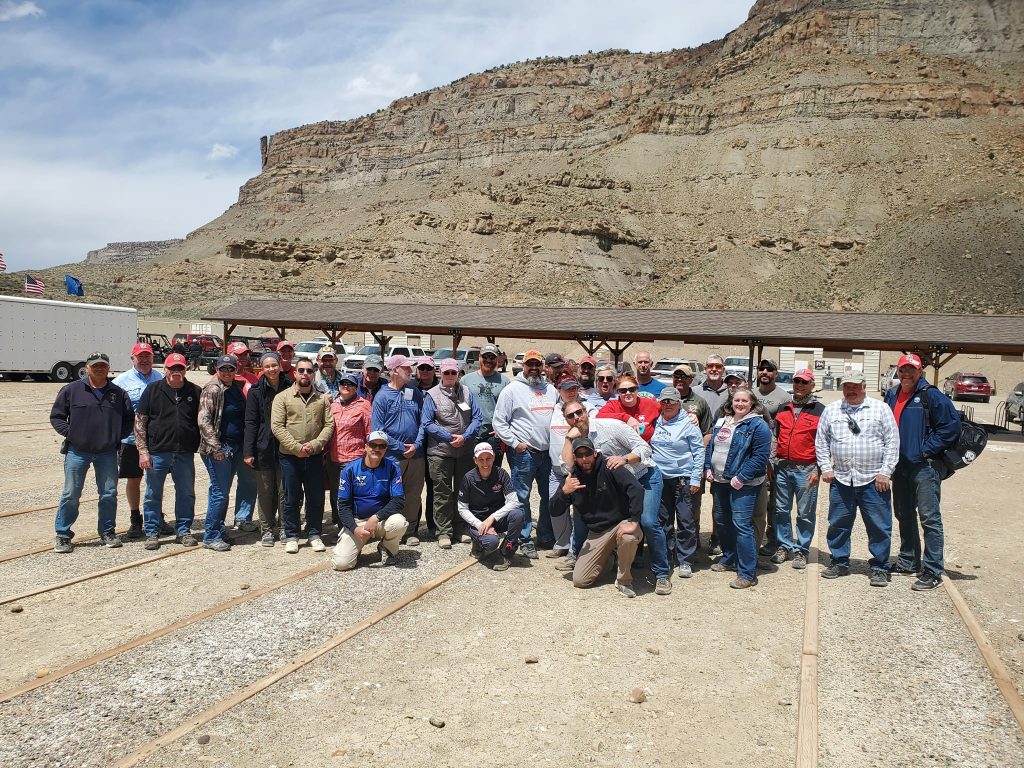
And–really cool–we were supported by an incredible group of volunteer Range Donkeys (husbands) from around the country, as well as a few dozen volunteer RSOs from Cameo.
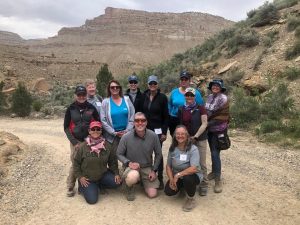
The event was put on by Julianna Crowder and Robyn Sandoval and they knocked it out of the park again.
I taught 6 half-day sessions this year…
Three were on tactical vision training with some balance, hand-eye coordination and movement integration as well.
We covered several topics on how to improve visual performance, the connections between vision, strength, and speed, how to correctly identify and stabilize eye dominance (the triangle-in-front-of-your-eye is incredibly unreliable), both eyes open shooting, and integrating vision, balance, and hand-eye coordination.
One of the big topics that we kept coming back to was the idea that bad sensory input = bad motor output, stress, and pain.
If the areas of the brain responsible for vision, balance, or hand-eye coordination are under-performing, the brain interprets it as a threat.
This increases the stress level we feel, increases perceived pain, impacts blood sugar levels, slows down reaction times, reduces speed, and reduces the percentage of muscle fibers that your brain is willing to activate when you flex.
In many cases we were able to lower the threat level in the brain and see immediate improvement in mobility, less pain, improved visual performance, and improved shooting performance. This resulted in some big hugs, lots of smiles, and some almost-tears, as some of them had been dealing with issues for years that they hadn’t been able to figure out.
 Eye dominance was a big breakthrough for several shooters who had been mis-assessed for eye dominance in the past, which is incredibly common.
Eye dominance was a big breakthrough for several shooters who had been mis-assessed for eye dominance in the past, which is incredibly common.
Eye dominance is really simple when the sights line up with the middle of a pupil, but 30ish% of the time, the sights line up with the corner of the eye rather than the pupil (and this alignment is unstable) and 10ish% of the time, the sights line up with the bridge of the nose and can switch back and forth between the eyes.
Traditional eye dominance tests force dominance assessments to one eye or the other and can create a TON of frustration for shooters with visual suppression issues or cyclopian dominance.
Simply put, if you imagine what the target sees as it looks back over the top of your sights at you as you’re shooting, the target should see your sights lining up with one pupil or the other. If the sights don’t line up with one pupil or the other each time the shooter presents the firearm, it introduces randomness and frustration.
We cover how to address this in the See Quicker Shoot Quicker course and the results can be quick and dramatic. Here’s a pic from last year of us going over an assessment of each shooters’ eye dominance.

Several of the women came into the class having difficulty shooting with both eyes open.
Shooting with both eyes open doesn’t really matter for slow-speed or low-stress shooting, because you can simply close one eye. But both-eyes-open shooting is pretty darn important for self-defense shooting.
Not because of situational awareness, but because of the impact of closing one eye on how quickly and accurately you can see…ESPECIALLY in low light.
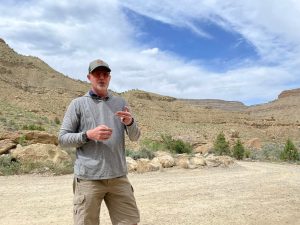
In full light, closing one eye can reduce reaction times by 10-30% and that reaction delay goes up as ambient light goes down.
In addition, closing one eye reduces the speed and accuracy at which we can process dynamic visual situations…simply put, keeping both eyes open allows us to see whether a potential threat that we’re covering becomes an immediate threat that we need to shoot faster and more accurately.
Having both eyes open also allows us to see whether presenting our firearm causes a clear and present threat to no longer be a threat…again, faster and more accurately.
We had some awesome results with some of the women…some good results with some…and doing the versions of the drills that we did was too much for others.
There’s a drill that I’ve done with well over 1,000 shooters that we did together. We stand at 10-15 feet and shoot 5x 1.5×4″ driveway reflectors for time.
Then we do a couple of minutes of neurological drills that I share in the Automatic Aiming presentation.
Then we re-test.
Here are the before and after numbers from one of the classes:
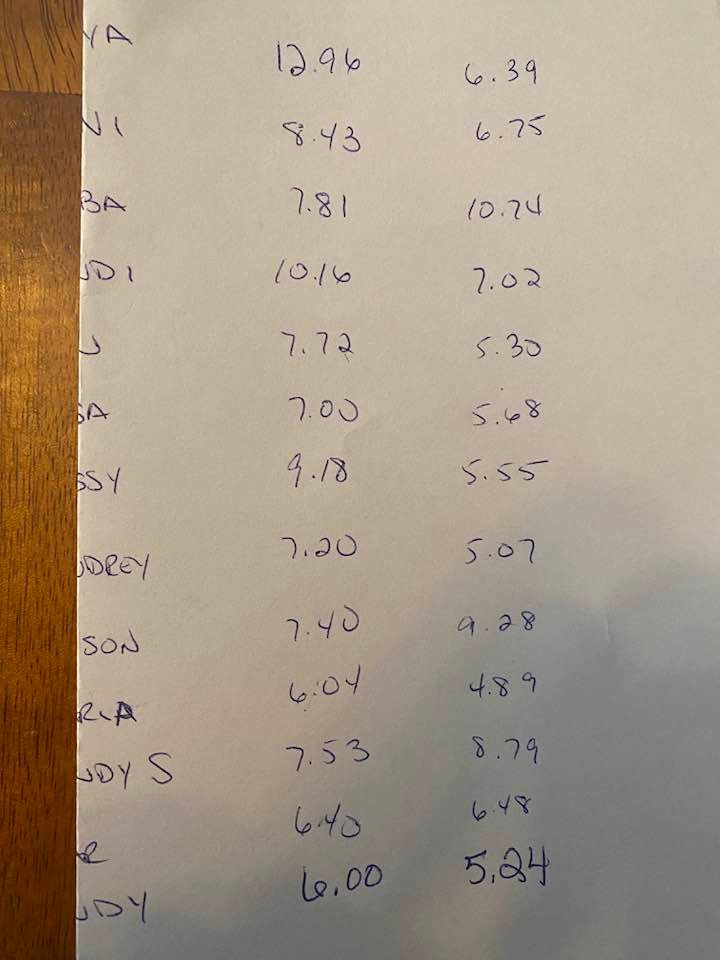
VERY dramatic and quick change.
To give you an idea of how big of a deal this is, instructors are generally overjoyed when students get a 20% improvement in speed and accuracy over the course of a 2-3 DAY course. We’re getting it in 2-3 minutes without changing gear or technique. We’re simply improving how the brain processes sensory input.
I have a dream that someday, every instructor will start every class with these drills…maybe call them “Ox’s reset drills” 🙂 and build all of their training and instruction on top of them.
Why didn’t everyone improve?
It could be fatigue, hunger, or something as simple as the last drill that we did before retesting being too much of a challenge for their brain at that moment.
Think about it this way…if you can work out with 100 pounds and decide to work out with 1 pound weights, you’ll get very little benefit. If you try to work out with 300, it will be too far beyond where you’re comfortable and your brain/body will have a negative reaction. But if you lift in the 102-104 pound range, it will be just far enough outside of your comfort zone that you optimize growth.
So we discussed how they could train when they got home to see the improvement they were looking for…how to properly combine drills in areas where they have issues with areas where they are strong.
That meant sharing different versions of the drills and how to incorporate “problem” drills into their training in a way to minimize frustration and maximize results by sandwiching the challenge drills between easy drills.
The vast majority of this training came from the See Quicker Shoot Quicker training and some from the Automatic Aiming training…both of which you can do at home.
I taught 2 classes this year on how to instruct and train more effectively. This primarily came from my book, “Real World Gunfight Training“ and was a mix of real world training in context, accelerated learning, performance neurology, and stress modulation.
Big picture:
- Use real world context in training (much of which is sensory…vision, balance, body awareness. The more reality differs from practice, the more lag we’ll experience, the less accurate we’ll be, and the lower the quality of decisions we’ll make.
- When we train the way the brain is wired to learn, we’ll learn skills up to 10x faster, saving time, money, and injury.
- Build skills on solid sensory input. Basically, get vision, balance, and body awareness working together before trying to learn skills.
- Try to deliver vocabulary, concepts, and initial (visual) exposure to skills in the days/weeks before live training so that students can learn skills and application of skills faster.
- Incorporate stress modulation. The more practiced you are at managing your thoughts and breathing in training, the more likely that you’ll be able to in a high stress situation, make more better choices, fewer worse choices, and have a better outcome.
You’ll probably notice that these come from the 6 Gunfight Factors that we discuss in the Praxis Gunfight Training.
The 3rd class I taught was on managing stress and anxiety for competition, qualifiers, and self-defense. It was titled “Qual Like A Boss” and it was made up of a mix of women who had no issues with the stress side and just wanted to know how to break down a course of fire for training, women who already shoot good and wanted to compete better, and women who saw drops in performance when they went from training to performing under the stress of the clock.
This was a super-cool class and probably the most impactful. It also hit very to home for me. I’ve choked at SO many things over the years…from high school sports, public speaking, and early competitive shooting. In high school discus, as an example, I had multiple meets where I threw far enough to break records in warm-ups and then threw so bad I didn’t place in competition. Once I learned WHAT to think about and HOW to think during competition, things got fun.
For the FBI instructor qualifier, I recorded a progressive relaxation script and then took them through a visualization of shooting the qualifier successfully.
We broke down the qualifier into it’s component skills and pointed out that they didn’t need to worry about passing the qualifier…they just needed to focus on one of the component skills at a time (draw and shoot, reload, splits, shoot from low ready, etc.)
We discussed how you don’t need to be concerned about performing a skill that you’ve never been taught or never had a chance to practice. Learn it first, practice it second, and THEN start thinking about performing the skill.
We looked at focusing on process vs. outcome, internal vs. external, past vs. present vs. future, and broad vs. narrow and how each of them impacts performance under stress.
Several had residual stress from past TBIs and we did neuro drills with eye movement, breathing, and the ears to shift them from a constant sympathetic state to a relaxed, parasympathetic state. The idea being that if they are going to do an activity that increases their stress level by 3, it’s much better to start at a level of 4-5 than starting at a 7-8.
A couple of the ladies had grip issues…one from rheumatoid arthritis and one from hand surgery. We did a vagus nerve drill for the lady with RA and her grip intensity went from 32lbs to 54lbs in about a minute. We improved the sensory map of the hand of the lady who’d had surgery and she saw about a 15% increase in grip intensity in a couple of minutes.
We did all of these drills in a way that the women could do them at home, without me…so the improvement was not tied to me. They OWNED the improvement, and the process to get the improvements themselves, any time they wanted to do them moving forward.
Julianna, Robyn, Tatiana, and the rest of the A Girl and A Gun crew have done an incredible job of advancing womens’ shooting, with AGAG women-only shooting and training chapters from coast to coast, 2 national events per year, Back The Women In Blue training, and 2A work with The DC Project. What they’re doing is absolutely critical for the future of our right to own firearms and the freedoms that those firearms protect.
If you’re a woman, I want to strongly encourage you to get to an event like this (click HERE for more info). It’s great for women to shoot with men, but it’s especially valuable for women to spend time shooting with other women. The dynamic can be a huge help for many female shooters. Not watered down…just different.
In fact, one of the biggest reasons why woman only shooting events are so valuable is because there are no men around to coddle them. (The male instructors were all on board with this) At a woman’s only event, the women load their own mags, rack their own slides, haul their own gear, etc. When things don’t work, there are other women to share solutions that worked for them, but the goal is to help every woman be safe, competent, and capable with the guns they own or carry.
Why is this so important and why am I such a strong supporter of women’s shooting?
Because to a large extent, our future ability to own, shoot, and carry guns depends on getting women involved with shooting.
Women manage family schedules, family budgets, they vote, and they share their interests with others.
To be clear, we don’t just want more women “involved”…we want women to be safe, responsible, and effective shooters.
So, this Mothers’ Day weekend, if you want to get a taste of the training that we did at Conference, check out this free tactical vision training presentation or this free counter-assault training presentation and, if you want to take the next step and learn how to build hours of skill in minutes of training just sign up for the training I mention at the end of the presentations. And here’s something to sweeten the pot…for everyone who signs up for Automatic Aiming or Praxis this weekend, I’ll donate access to the full training to A Girl and A Gun 🙂
Questions? Comments? Fire away by commenting below…

Leave A Response